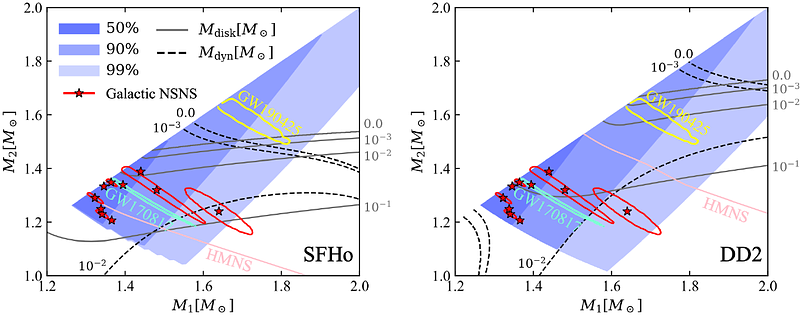Multi-messenger observations in the Einstein Telescope era: binary neutron star and black hole - neutron star mergers

Multi-messenger observations in the Einstein Telescope era: binary neutron star and black hole - neutron star mergers
Alberto Colombo, Om Sharan Salafia, Giancarlo Ghirlanda, Francesco Iacovelli, Michele Mancarella, Floor S. Broekgaarden, Lara Nava, Bruno Giacomazzo, Monica Colpi
AbstractThe Einstein Telescope (ET), a proposed next-generation gravitational wave (GW) observatory, will expand the reach of GW astronomy of stellar-mass compact object binaries to unprecedented distances, enhancing opportunities for multi-messenger observations. Here we investigate multi-messenger emission properties of binary neutron star (NSNS) and black hole-neutron star (BHNS) mergers detectable by ET, providing projections to optimize observational strategies and maximize scientific insights from these sources. Using a synthetic population of compact binary mergers, we model each source's GW signal-to-noise ratio, sky localization uncertainty, kilonova (KN) light curves in optical and near-infrared bands, fluence of the relativistic jet gamma-ray burst (GRB) prompt emission and afterglow light curves across radio, optical, X-ray and very high energy wavelengths. We analyze multi-messenger detectability prospects for ET as a standalone observatory with two different configurations and within a network of next-generation GW detectors. ET will detect over $10^4$ NSNS mergers annually, enabling potential observation of tens to hundreds of electromagnetic (EM) counterparts. BHNS mergers have more limited multi-messenger prospects, but joint GW-EM rates will increase by an order of magnitude compared to current-generation instruments. We quantify uncertainties due to the NS equation of state (EoS) and mass distribution of NSNSs, as well as the NS EoS and BH spin for BHNSs. While a single ET will achieve an impressive GW detection rate, the fraction of well-localized events is orders of magnitude lower than in a network with additional detectors. This significantly limits efficient EM follow-up and science cases requiring well-characterized counterparts or early observations. The challenge is even greater for BHNS mergers due to their low EM rate.